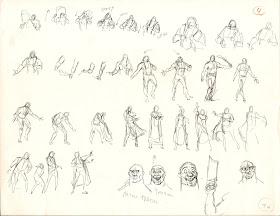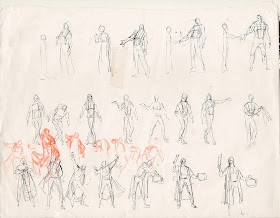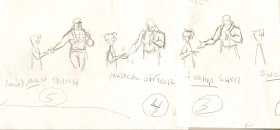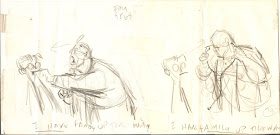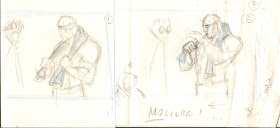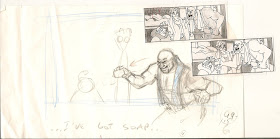Just saw this. Congrats and thanks!
Friday, December 16, 2016
Steamboat School - Booklist Editors Choice: Books for Youth, 2016/ Booklist Online...
Another notification from my editor concerning Steamboat School...
Just saw this. Congrats and thanks!
Just saw this. Congrats and thanks!
Wednesday, December 14, 2016
Steamboat School before 2016 ends...
I’m delighted to inform you that the following books were selected for Chicago Public Library’s Best of the Best books of 2016:
- Steamboat School
The Best of the Best lists represent our choices for the year’s most outstanding titles, books of exceptional quality for a diverse, city-wide readership. The list is widely promoted throughout Chicago, including local news coverage. We order extra copies of these books in various formats to promote them throughout the city, give them special labels, and we feature them in branch displays and in our catalog and web site. We also present them to staff as great reading suggestions to promote to our patrons.
Congratulations and thanks so much for your support throughout the year, including advance review copies, which help make this process possible. We look forward to a new year of reading your books.
All my best,
Liv
Liv Hanson | Content Curator, Youth
Technology, Content and Innovation | Chicago Public Library
and Steamboat School got an 'Honorable Mention' Best Picture Books of 2016 by Huffington Post.
until next time...
Sunday, October 23, 2016
Atlantis: The Lost Empire...part 4
More workbook and thumbnail sketches...
Workbook (WB) poses are designed to convey the basics...it is up to the animator to make the scene entertaining.
WB sketches (below) give the basic intent of the scene and indicate the camera move (upper right corner).

Thumbnail sketches (based on the sketches made on the x-sheet- see part 3) work out the action of the handshake, his walk toward camera, putting on the lab coat and reaching into medical bag to pull out the bone saw.
Though only his upper torso is visible, the whole body has to be kept in mind for believable animation.
Thumbnails to help visualize and work out the action (below- right #1 to left #14)...these are the drawings that I would show the directors to get their approval to proceed to animation.
The directors input...
Am I capturing the action as they envisioned?...do I need to add or omit some action, did I overlooked something?... after all, it is their movie.
Thumbnails to work out the mouth shapes for dialogue"...well, no time like the present..."
(this scene is presented in more detail in ...part 2)
Workbook sketches...
The scene starts out with the Doctor talking to Milo about the bone saw and what he can do with it...
and ends with him saying "...say ahh..."
The thumbnails of the action and dialogue...
Thumbnails to work out the action- into the medical bag goes the bone saw, out comes a tongue depressor...the dialogue "...stick out your tongue and say ahh..."

Thumb nailing (below) my way trying to find an interesting way for Dr. Sweet to look into Milo's mouth...
Dr. Sweet's monologue with Milo is loaded with questions of which he (Milo) cannot answer with several objects poked in his mouth in succession...
Thumbs to visually see if the mouth shapes are working for the Dr.'s line of dialogue "...fishing, I hate fishin'... and experimenting to see if the beakers can be introduced in an entertaining way (below, lower left).
Lower right thumbnails were probably done at a football game as the page contains a referee and player. I carry a sketch book with me at all times and when inspiration hits me I'm prepared to jot the thoughts on paper.
WB gag brings out the jokester in the Dr...
The animators job is to plus the scene by making it entertaining and appealing. By offsetting the beakers, having distance between them and having one tossed into the air made better presentation and staging without taking away from the original intent of the scene.


WB and thumbnails "...you too..."
until next time...
Wednesday, October 19, 2016
Society of Illustrators Website Sticker
Artwork from Steamboat School will be on display in next weeks opening of The Original Art 2016 exhibition of Children's Book Illustration.
My and other illustrators artwork will be on display from October 26 - December 22, 2016.
until next time...
Tuesday, October 4, 2016
Atlantis: The Lost Empire...part 3
Introducing Dr. Sweet...

Directors Kirk Wise and Gary Trousdale issue the first scenes of Dr Sweet... After meeting with them and hearing their input as to how they envision the sequence, I'm ready to start.
Dr. Joshua Sweet...
The first time the audience is introduced to the Doctor we get all his vital information:
His stature: an upshot from Milo's point of view (pov) to accentuate his height...
His voice : deep, smooth, rich tone and rapid delivery of lines...
His thought process: quick brain process as he evaluates the situation that got Moliere upset...
His personality: humorous, peacemaker (Milo/Moliere), father figure (scolding Moliere), proud of his tools (bone saw) jokester (beakers) and at the same time the audience gets information about Moliere's quirkiness...

Workbook sketches and thumbnail sketches prior to animation...
The workbook (WB) sketch gives the animator basic information- camera angle, background, character size in relation to camera field size, camera move(s) if any, and other information the animator may need to know to bring to life a successful scene.
In this sequence...
Milo is ushered by Moliere into this mountain of a man...
The WB gives his ending pose from Milo's pov, the animator must figure how he got there (ending pose).
I started with the head in the up position with the dialogue "Uh, oh.." ending in the WB pose... "sat in the dirt, didn't you"...
Thumbnails to work out the action for the dialogue "...Moliere...what did I tell you about playing nice with the other kids?..." Tony DeRosa (Moliere) and John Pomeroy (Milo) would be responsible for the animation of the other characters.
WB/thumbnails...
"...I got soap..."
WB/thumbnails...
"...and I'm not afraid to use it..."
WB/thumbnails...
Thumbs to work out action of the towel snap...
Exposure sheet (X-sheet)-
In written form it gives the animator information about the scene:
A synopsis, scene length, starting and ending field sizes and camera moves.
There are columns for character(s), overlay, underlay, background and effects.
A column marked DIAL is for dialogue in which words are broken down into the syllables just as the voice actor said them and how much time between the words spoken.
I used the third column from the left to pose out small drawings to get a rough idea of the timing of the action.
(Under this old system, in my era, there were limits to the number of 'cels' in a scene before the bottom levels were out of focus. With the elimination of cels, any number of levels can be compiled in a computer without compromising the quality or color of the final product.)
until next time...

Directors Kirk Wise and Gary Trousdale issue the first scenes of Dr Sweet... After meeting with them and hearing their input as to how they envision the sequence, I'm ready to start.
Dr. Joshua Sweet...
The first time the audience is introduced to the Doctor we get all his vital information:
His stature: an upshot from Milo's point of view (pov) to accentuate his height...
His voice : deep, smooth, rich tone and rapid delivery of lines...
His thought process: quick brain process as he evaluates the situation that got Moliere upset...
His personality: humorous, peacemaker (Milo/Moliere), father figure (scolding Moliere), proud of his tools (bone saw) jokester (beakers) and at the same time the audience gets information about Moliere's quirkiness...

Workbook sketches and thumbnail sketches prior to animation...
The workbook (WB) sketch gives the animator basic information- camera angle, background, character size in relation to camera field size, camera move(s) if any, and other information the animator may need to know to bring to life a successful scene.
In this sequence...
Milo is ushered by Moliere into this mountain of a man...
The WB gives his ending pose from Milo's pov, the animator must figure how he got there (ending pose).
I started with the head in the up position with the dialogue "Uh, oh.." ending in the WB pose... "sat in the dirt, didn't you"...
Thumbnails to work out the action for the dialogue "...Moliere...what did I tell you about playing nice with the other kids?..." Tony DeRosa (Moliere) and John Pomeroy (Milo) would be responsible for the animation of the other characters.
WB/thumbnails...
"...I got soap..."
WB/thumbnails...
"...and I'm not afraid to use it..."
WB/thumbnails...
Thumbs to work out action of the towel snap...
Exposure sheet (X-sheet)-
In written form it gives the animator information about the scene:
A synopsis, scene length, starting and ending field sizes and camera moves.
There are columns for character(s), overlay, underlay, background and effects.
A column marked DIAL is for dialogue in which words are broken down into the syllables just as the voice actor said them and how much time between the words spoken.
I used the third column from the left to pose out small drawings to get a rough idea of the timing of the action.
(Under this old system, in my era, there were limits to the number of 'cels' in a scene before the bottom levels were out of focus. With the elimination of cels, any number of levels can be compiled in a computer without compromising the quality or color of the final product.)
until next time...
Sunday, September 4, 2016
Atlantis:The Lost Empire...part 2
Feb. 1998...

"Atlantis Moves Full Steam Ahead" announced the newsletter (below)...
and the 'lead' animators were introduced.

Me and Dr. Sweet at the animation desk...
First assignment...
The directors wanted to see how CGI (computer generated imagery) elements and traditional animation would work together as there were a lot of trucks and machinery interacting with animated characters in the picture.
I was given photostats of a automobile driving towards the screen at 24 fps (frames per second).
A soldier meets the vehicle and at some point has to come in contact with the vehicle.
Workbook sketch I was given to work from...
A little thought...why not have a little fun and add a measure of entertainment to the mix:-)
Thumbnail sketches (below) to work out the action:
Here is what I came up with-
The soldier sitting, hearing the auto approaching, gesturing for the vehicle to stop, put one foot on the running board of the car (contact between CGI and traditional animation), dialoguing with the occupants, point in the direction it should go, takes notes on his clip board and gets his foot run over as the car leaves the scene. Simple enough, lets do it.
This piece was cleaned up, went to color and shown in 'dailies'.
Never to be seen again, but assignment "accomplished" as these two elements, CGI and traditional, can be believed to exist in the same world.
Voice Talent-
Phil Morris,(son of Greg Morris, Barney on the 60's TV program Mission: Impossible) voiced my character, Dr. Joshua Sweet.
Though slight in build, Phil's rich, deep voice was a perfect match for the Doctors large physical stature.
Phil's rapid delivery of lines gave my pencil a daily workout as I attempted to come up with interesting mouth shapes that didn't look 'mushy' or weird.
With all the preliminaries out of the way I was now ready to not only make drawing move but as Walt Disney envisioned, make "drawings that live".
First I must say a word about all the people that make this art form happen...
Disney Animation would not be the entertaining and engaging art form that it is without a crew of people behind the scenes. These behind the scenes folks do not get enough credit for the final results that are seen on screen.
In team sports for example, quarterbacks in football and pitchers in baseball are highlighted as the 'stars' of the show. So it is with animators on a film as we get a generous share of credit for the production.
Most do not realize that it takes a great many people to get a film to the big screen (upwards to a thousand people are listed in the screen credits of Atlantis!) and it would take me and a crew of people to get Dr. Sweet to the screen
My crew attended periodic 'chalk talks' where I would go over how to draw Dr. Sweet and address any problems that may have developed as the production progressed.
These are the crew members that helped my Dr. Sweet animation 'live'...
From left to right: Don Parmele (assistant), Marianne Tucker (lead key), Susan Lantz (key assistant), Suzanne Hirota (inbetweener), Mary Measures (assistant) and Mary Jean Repchuk ((clean-up).
Planning out a scene...
I would first have a discussion with directors Kirk Wise and Gary Trousdale concerning the intent of the scene.
This is the first meeting of Milo and the Doctor....
The directors supply me with the who, what, when, where, why and how questions concerning the scene.
Why is the scene here at this particular point in time, who is being addressed, where is it taking place, what are we trying to accomplish or say about the character(s) are just some of the questions that have to be addressed as the story unfolds.
Context of the scene...
Some light comedy moments had occurred earlier and after shaking hands, the Doc walks over to his medical bag and pulls out a bone saw and his dialogue is..."well, no time like the present"....
Workbook/story sketch drawing depicting the of the action, position and size...
Thumbnail drawings to work out the action...
Rough animation key poses (without inbetweens)...these drawings would be rough inbetweened, and if/when approved all drawings would be cleaned-up, colored, background and any effects added (the sword sound as the saw is drawn out of the bag) and scanned.
The Timing Chart-
The chart (upper far right) deals with the total body and bone saw, drawings #27 to #45.
Key drawings such as this one are charted to guide the inbetween artist as to where their drawings should be placed. Drawing #27 and #45 are the key drawings in this scene. The chart provides the inbetween artist with information that they need to do a drawing (#31) half way between #27 and #45.
After drawing #31 there would be a drawing between #27 and #31=#29. The other side of the chart would have drawing #33 half way between #31 and #45 and so forth to the end of the scene.
Mouth Chart-
Since the Doctor is talking, a separate chart is used for the mouth. He is saying the word 'present' and in drawing #27 has an 'e' mouth shape and drawing #29 should favor or be like #31. A note is included with the chart to remind the inbetween artist that 'teeth' are to be shown like in #31.
What every animator wants to hear (below), is that his scenes are communicating positively to others.
Until next time...

"Atlantis Moves Full Steam Ahead" announced the newsletter (below)...
and the 'lead' animators were introduced.

Me and Dr. Sweet at the animation desk...
First assignment...
The directors wanted to see how CGI (computer generated imagery) elements and traditional animation would work together as there were a lot of trucks and machinery interacting with animated characters in the picture.
I was given photostats of a automobile driving towards the screen at 24 fps (frames per second).
A soldier meets the vehicle and at some point has to come in contact with the vehicle.
Workbook sketch I was given to work from...
 |
| (Workbook sketch) |
A little thought...why not have a little fun and add a measure of entertainment to the mix:-)
Thumbnail sketches (below) to work out the action:
Here is what I came up with-
The soldier sitting, hearing the auto approaching, gesturing for the vehicle to stop, put one foot on the running board of the car (contact between CGI and traditional animation), dialoguing with the occupants, point in the direction it should go, takes notes on his clip board and gets his foot run over as the car leaves the scene. Simple enough, lets do it.
This piece was cleaned up, went to color and shown in 'dailies'.
Never to be seen again, but assignment "accomplished" as these two elements, CGI and traditional, can be believed to exist in the same world.
 |
| (Thumbnails of the envisioned action) |
 |
| (More thumbnails to help visualize the action) |
 |
| (Refining the action through thumbnails) |
Voice Talent-
Phil Morris,(son of Greg Morris, Barney on the 60's TV program Mission: Impossible) voiced my character, Dr. Joshua Sweet.
Though slight in build, Phil's rich, deep voice was a perfect match for the Doctors large physical stature.
Phil's rapid delivery of lines gave my pencil a daily workout as I attempted to come up with interesting mouth shapes that didn't look 'mushy' or weird.
 |
| (Phil Morris and me prior to a recording session) |
First I must say a word about all the people that make this art form happen...
Disney Animation would not be the entertaining and engaging art form that it is without a crew of people behind the scenes. These behind the scenes folks do not get enough credit for the final results that are seen on screen.
In team sports for example, quarterbacks in football and pitchers in baseball are highlighted as the 'stars' of the show. So it is with animators on a film as we get a generous share of credit for the production.
Most do not realize that it takes a great many people to get a film to the big screen (upwards to a thousand people are listed in the screen credits of Atlantis!) and it would take me and a crew of people to get Dr. Sweet to the screen
My crew attended periodic 'chalk talks' where I would go over how to draw Dr. Sweet and address any problems that may have developed as the production progressed.
 |
| (Flyer announcing crew gathering for chalk talk) |
These are the crew members that helped my Dr. Sweet animation 'live'...
 |
| (Me and Dr. Sweet crew) |
Planning out a scene...
I would first have a discussion with directors Kirk Wise and Gary Trousdale concerning the intent of the scene.
This is the first meeting of Milo and the Doctor....
The directors supply me with the who, what, when, where, why and how questions concerning the scene.
Why is the scene here at this particular point in time, who is being addressed, where is it taking place, what are we trying to accomplish or say about the character(s) are just some of the questions that have to be addressed as the story unfolds.
Context of the scene...
Some light comedy moments had occurred earlier and after shaking hands, the Doc walks over to his medical bag and pulls out a bone saw and his dialogue is..."well, no time like the present"....
Workbook/story sketch drawing depicting the of the action, position and size...
 |
| (Workbook drawings top and bottom right) |
Thumbnail drawings to work out the action...
 |
| (Thumbnail drawing to visualize the action) |
Rough animation key poses (without inbetweens)...these drawings would be rough inbetweened, and if/when approved all drawings would be cleaned-up, colored, background and any effects added (the sword sound as the saw is drawn out of the bag) and scanned.
 |
| (Key poses in rough animation, drawing #1...'W' mouth shape)- |
 |
| (drawing #3...'E' mouth shape ) |
 |
| (drawing #5...'L' mouth shape, notice tongue) |
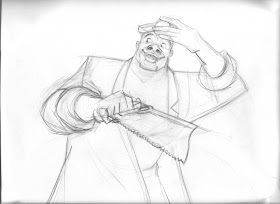 |
| (drawing #7...mouth between well and no) |
 |
| (drawing #9...'O' mouth shape) |
 |
| (drawing #13...'T' mouth shape) |
 | |||
| (drawing #27...'E' mouth shape-with timing chart) |
The chart (upper far right) deals with the total body and bone saw, drawings #27 to #45.
Key drawings such as this one are charted to guide the inbetween artist as to where their drawings should be placed. Drawing #27 and #45 are the key drawings in this scene. The chart provides the inbetween artist with information that they need to do a drawing (#31) half way between #27 and #45.
After drawing #31 there would be a drawing between #27 and #31=#29. The other side of the chart would have drawing #33 half way between #31 and #45 and so forth to the end of the scene.
Mouth Chart-
Since the Doctor is talking, a separate chart is used for the mouth. He is saying the word 'present' and in drawing #27 has an 'e' mouth shape and drawing #29 should favor or be like #31. A note is included with the chart to remind the inbetween artist that 'teeth' are to be shown like in #31.
 |
| (#31...'S' mouth shape-with body, mouth and eye charts) |
 | |||||
| (#45 last drawing in scene) |
What every animator wants to hear (below), is that his scenes are communicating positively to others.
| (Note from the producer giving Dr. Sweet animation a 'thumbs up') |
Until next time...


